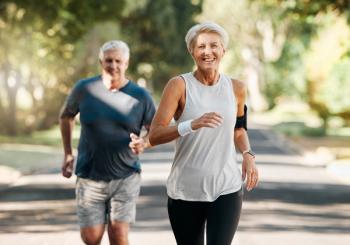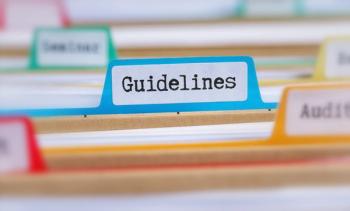
Aerobic exercise and BMD in postmenopausal women
A recent study aimed to identify the optimal exercise dose to prevent bone loss in postmenopausal women.
Postmenopausal women who participated in 300 minutes per week of aerobic exercise for 1 year achieved significantly higher bone mineral density (BMD) compared to postmenopausal women who engaged in only 150 minutes a week of aerobic exercise, according to a prospective
“Furthermore, this difference between the two groups remained for an additional year after the end of the 1-year intervention,” said principal investigator Christine Friedenreich, PhD, FCAHS, scientific director of the Department of Cancer Epidemiology and Prevention Research at Alberta Health Services in Calgary, Alberta, Canada.
Completing a higher volume of impact exercises of roughly 90 minutes or more per week also led to a smaller decrease in BMD.
“Postmenopausal women have an increased risk of bone fracture,” Dr. Friedenreich told Contemporary OB/GYN. “Several drugs treatments have been used in postmenopausal women for preventing bone mineral density loss. However, exercise is normally underused, and it is essential to make the general population aware of benefits of exercise on bone health.”
Apart from activities that induce high-muscle tension like resistance training, exercise-induced osteogenesis is associated with high-impact loading activities such as jumping. “Nonetheless, the optimal exercise dose to prevent bone loss in postmenopausal women remained to be elucidated,” Dr. Friedenreich said. “For that reason, we conducted the present study.”
The study recruited 400 English-speaking postmenopausal women between ages 50 and 74 who resided in either Calgary or Edmonton. Enrollees were randomized to either 150 minutes per week (moderate-dose group) or 300 minutes per week (high-dose group) of aerobic exercise. Women could complete any type of aerobic exercise, including running, walking or cycling. Participants gradually increased the frequency, duration, and intensity of their exercise in the first 3 months and then maintained it for the rest of the year-long study.
Total BMD (g/cm2) and bone mineral content (g) were evaluated at baseline, 12 months (end of the intervention) and 24 months (follow-up period) using whole-body dual-energy X-ray absorptiometry. At 12 months, mean BMD among women in the high-dose group was estimated to be 0.006 g/cm2 (95% CI: 0.001 – 0.010) higher than those women in the moderate-dose group. At 24 months, the mean difference between the two groups remained statistically significant, with mean BMD in the high-dose group estimated to be 0.007 g/cm2(95% CI: 0.001 – 0.001) higher than the moderate-dose group.
Women who completed more minutes per week of impact exercises also had significantly higher mean levels of BMD at 12 months compared to baseline: 0.006g/cm2 (95% CI: 0.006 – 0.012)
“We were not surprised by the main results of the study because they support our two main hypotheses,” said Dr. Friedenreich, division head for preventive oncology at Cumming School of Medicine, University of Calgary. “First, that higher volume of aerobic exercise would lead to a slower decline in bone mineral density compared to a lower dose in postmenopausal women and, second, those who voluntarily chose to spend more time doing impact loading activities would experience the least amount of decline in bone mineral density.”
However, Dr. Friedenreich said it is not possible to extrapolate the clinical relevance from the results of the study because BMD alone cannot predict fracture risk. “Instead, we can simply state that increased levels of aerobic exercise that include higher-impact exercise can improve bone mineral density, which is a marker for osteoporosis,” she said.
The motivation for postmenopausal women to engage in aerobic exercise is that osteoporosis is a serious health outcome that can dramatically influence well-being and physical functioning, according to Dr. Friedenreich.
The analysis was led by Paola Encabo-Gonzalo, as part of her doctoral studies in exercise sciences at the University of Alcala in Madrid, Spain.
Disclosures:
Dr. Friedenreich reports no relevant financial disclosures.
Newsletter
Get the latest clinical updates, case studies, and expert commentary in obstetric and gynecologic care. Sign up now to stay informed.
















